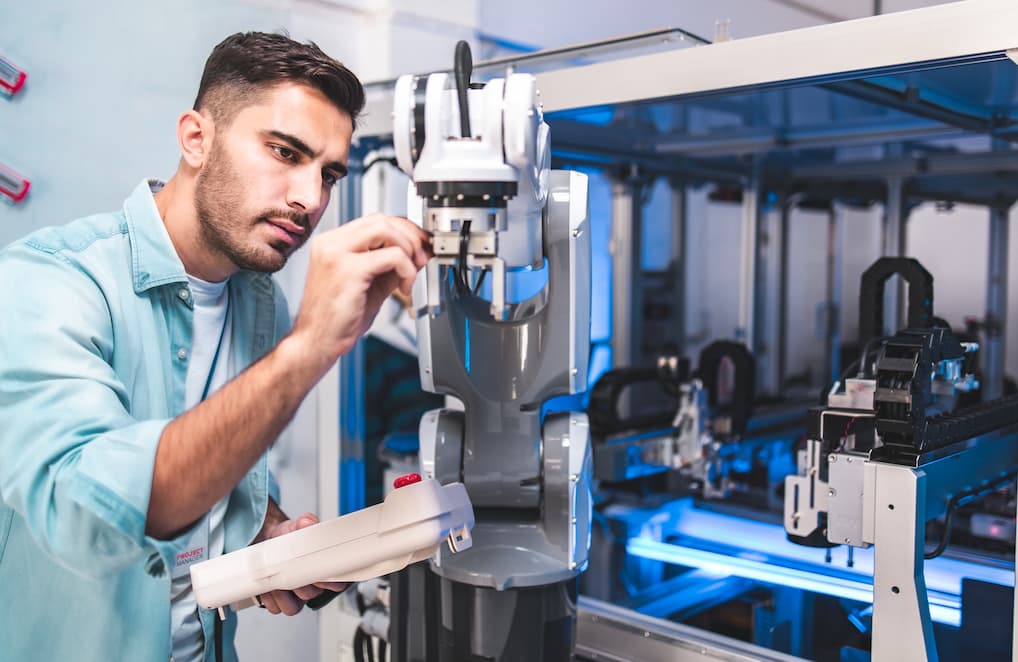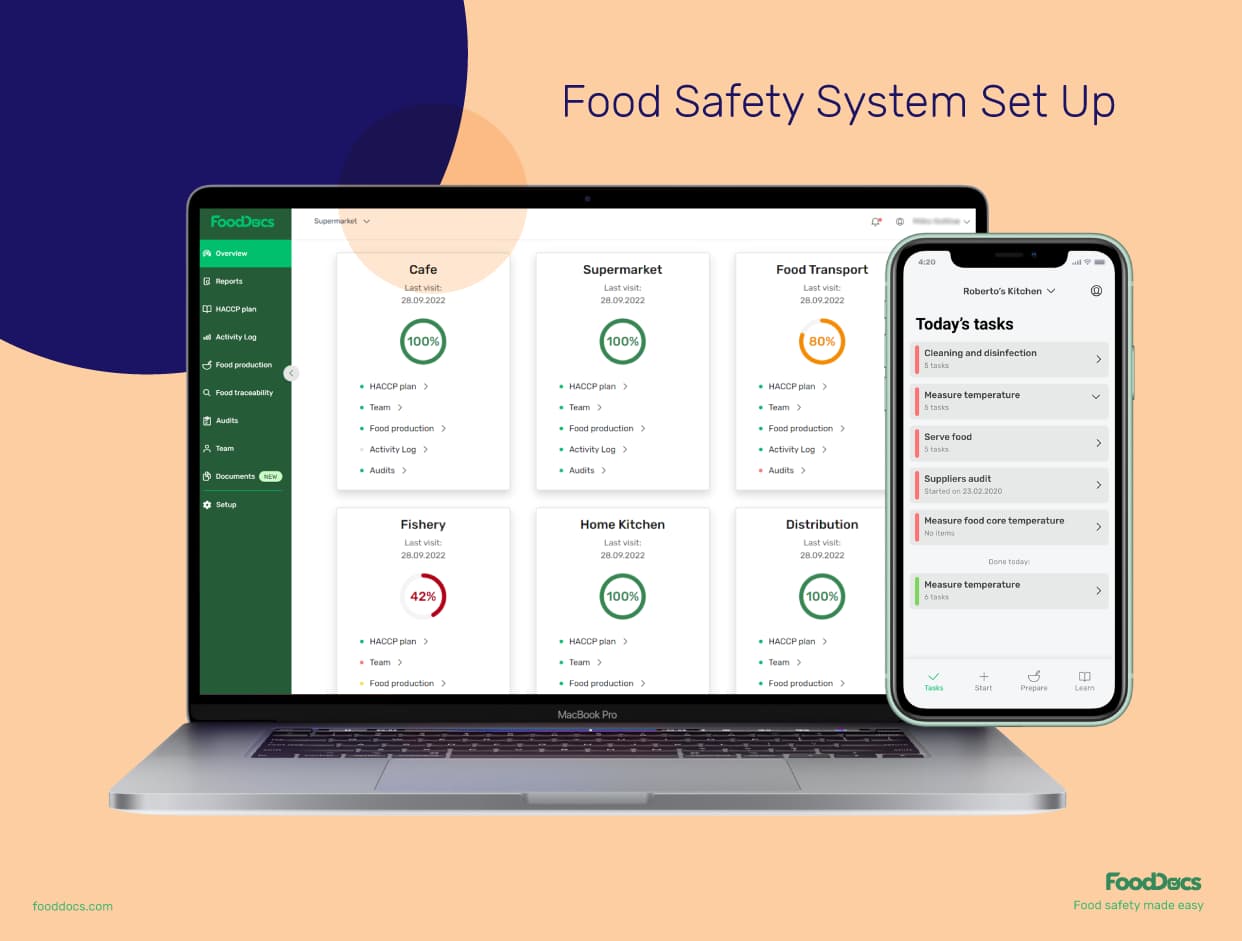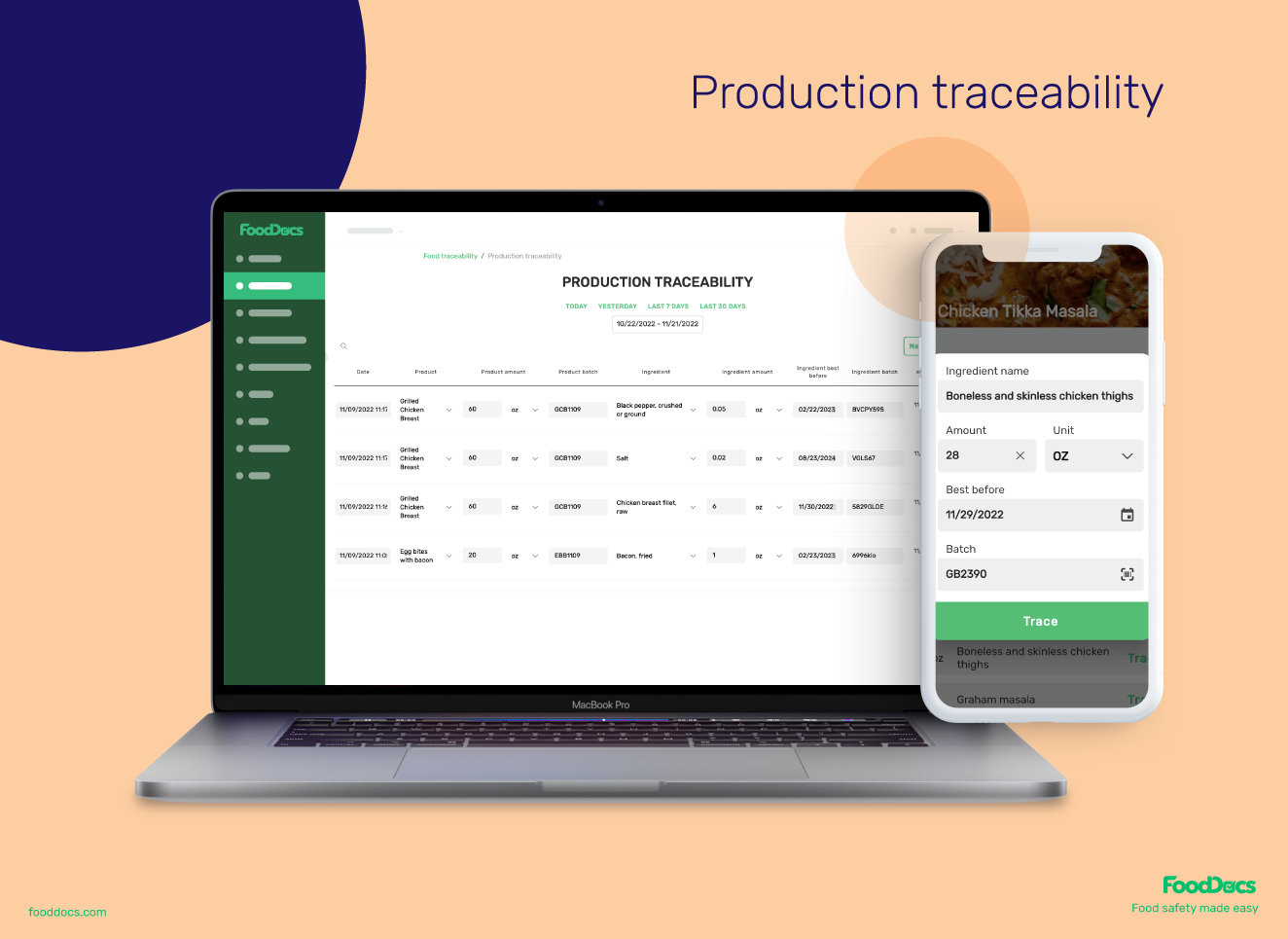Why Is Food Safety Important In Healthcare? Healthcare Leaders Guide
Learn challenges healthcare foodservice teams face today and key food safety practices to protect vulnerable patients. Get a free healthcare leader...
Food innovations keep the market relevant and exciting by finding ways to address safety, security, and more.
Every year, the food industry finds ways to make the lives of consumers and food business owners easier and more productive. The industry has seen a lot of food innovations over the past years, especially with the globalization of food markets and the impacts of climate change.
More opportunities for growth and development opened for business owners. From improving the eating habits of consumers through healthier options to automating food business operations for businesses, the industry does not shy away from any food innovation.
In this article, we discuss some of the most exciting innovative food science and emerging technologies taking over the food industry.
WHAT WE'LL COVER:
Food innovation definition refers to the development of new food processes, products, and services that significantly contribute to the industry's productivity and market choices. Innovations in food aim to improve the consumer's life and the efficiency of food business operations.
Food industry Innovation involves all aspects of the food supply chain. Where there is room for improvement, innovations can be applied.
Food and beverage companies continuously find more ways to produce healthier and newer options for consumers. Food innovations are often seen in products with healthier or unconventional ingredients that provide more benefits than the usual raw materials.
In addition, a food innovator focuses on finding more ways to make food service and manufacturing more accurate, safe, and sustainable. The development of processes often involves incorporating technology to make processes more effective and less prone to mistakes.

Innovations in the food industry undergo several stages of studying and experimentation. This field of science uses behavioral, natural, and applied food science principles to understand which solutions are required and suitable for current pressing problems.
Research in innovation combines scientific expertise, product development research, and behavioral studies to develop useful concepts. Several studies and surveys are performed to understand what current problems the industry is facing, and which ones can be resolved with innovations.
Innovation research uses marketing and business strategies to determine how the solution will be introduced to the public.
Food innovation is a multi-step process that involves long hours of conceptualization, testing, and implementation. The process usually comes from a small idea that can hugely impact the food supply chain.
Food innovation and product development share the same fundamental steps:
Innovative ideas for the food business start with a particular problem in the food industry. Food innovation companies gather information on current pressing matters in the industry, find ways to solve them and improve the customer's way of living. Gathering information for food innovation can be done through market research and feasibility studies.
Research studies that produce useful innovations consider the following factors:
The first step involves considering these factors and combining them to produce a detailed product concept.
After proving that the conceptualized food innovation ideas will provide significant solutions to an identified problem, innovators will create an initial process and sample of the product.
This step involves studying the dependability of the suggested innovative effects and reproducing the results. After a series of studies, the product will then be tested for the target market's acceptance and analyzed points for improvement.
Once the innovation is proven acceptable and effective, it is commercialized and introduced to the market. At this point, further improvements may be applied depending on the acceptance of the general market.
Food innovation undergoes more detailed steps. This outline represents how innovations in food and processes are made.
Innovations in the industry are products of finding ways to solve real-time problems with smarter and more efficient solutions.
The food industry survives and grows because of food innovation. Modern solutions to food safety, security, and quality issues have been resolved through innovations. In addition, more choices have become increasingly available as every food market opens up for globalization.
In particular, food innovation brings the following positive effects:
Through food innovation, food businesses discover competitive advantages and economic opportunities for growth. New products and processes keep a food business updated with the newest food safety trends. They also help businesses expand and cater to more market segments. Innovative food brands are more likely to stay in the market.
Innovations targeted toward processes often aim to increase the efficiency and effectiveness of operations. These include solutions for fewer errors and even human intervention. Innovative solutions can help companies produce more for less cost.
Food innovations, such as the automation of processes, make operations more accurate, thereby producing less waste and higher yield. Through such solutions, businesses can focus more on growing their operations and earning more.
A good example of this is when food businesses use a point-of-sale system (POS). This automated software automatically accounts for the expenses and profits of a business and connects them with other aspects of operations, including inventory management and accounting. There is no need for excessive manual intervention.
Food innovations open the door to the accessibility of food worldwide. One of the main objectives of food agencies is to provide safe, adequate, and sustainable food to all citizens of a nation, and innovations contribute to this.
An example of a significant innovation that contributes to security is the use of active packaging and food preservation. Such innovations allow food distributors to reach farther places while ensuring that the food is still safe to eat when it arrives to the consumers.
Food innovation also addresses issues of negative environmental impacts that significantly affect food security. Friendlier processes that generate less greenhouse gas emissions are discovered through food innovations.
Food innovations also help make smarter tools that will maintain compliance with less effort. Innovations such as FooDocs' digital Food Safety Management System automatically generate monitoring logs that would normally take hours or days to produce manually. In addition, this digital solution also offers a smart notification system through a mobile app that notifies food workers of tasks that need to be done.
As the food industry moves toward a more sustainable diet and technology-centric approach, food business operators and customers can expect smarter solutions and more choices. Food innovation is a vital part of the industry. It addresses consumer demands and allows businesses to become more competitive.

Recently, consumers and business owners collectively moved toward more sustainable products and healthier diet options. This trend is the result of increasing public health concerns.
The food service and manufacturing industry's response to issues in food safety and quality is to adapt with smarter, more accurate, and safer solutions.
Here are some of the biggest and latest food innovations to date:
Targeted nutrition refers to food production innovation with tailored nutritional and dietary components encouraging healthier eating habits. This food innovation involves several types of activities for consumers, food processors, and the healthcare industry. It aims to produce foods for risk-prone customers.
Targeted nutrition can be observed through the following processes and products:
This concept emphasizes the fact that different consumers have different nutritional needs. Innovations involved in targeted nutrition aim to cater to the complex dietary needs of individuals, especially those with existing medical conditions.
The innovation makes healthier options more accessible and fits a particular group of consumers.
In relation to the increasing demand for sustainable food production and fair trade of innovative food products, the food industry has focused much of its attention on improving food traceability and transparency.
To date, food business owners have now made the majority of their food supply chain visible to consumers virtually. The information is available through websites, mobile applications, or food labels, and is often accessible through QR codes and software.
Transparency in food production builds trust between food manufacturers and consumers. In a way, this innovation opens up your food business to the public eye and subjects your whole management to accountability. Consumer demands to know if the food they are consuming is sustainably and responsibly sourced.
Recent research shows that more than 70% of consumers think that food transparency in the modern food supply is important and is increasingly becoming a huge purchase intent factor.
Ghost kitchens are food service businesses that focus on the take-out-only business model. The trend of switching to ghost kitchens started when the CoViD-19 pandemic hit the industry. Due to limited access to establishments, food businesses started catering to deliveries and curb-side takeouts.
As it turns out, the concept of ghost kitchens fits the fast-paced lives of consumers perfectly. This food business combines the efficiency of delivery services and brick-and-mortar food service. It removes the need for front-of-the-house services, which boosts efficiency in the kitchen.
Ghost kitchens, while requiring less manpower, focus their food safety operations on the production area. Such aspects of the business model require less labor and rent costs.
With the help of more advanced solutions, such as machine-learning programs, ghost kitchens can focus more on identifying what the customers need.
Food businesses, whether service-centered, retail, or manufacturing, have embraced the efficiencies of software programs. The rise of software solutions is also partly the result of the pandemic. These solutions cut unnecessary downtime due to human errors and interactions, integrate operations, improve quality uniformity, and automatically help in learning more about the customers.
Some of the most widely used restaurant management software available in the market to date include:

Software programs introduce more possibilities and efficiencies to every food business. Streamlining a particular process and integrating multiple others together can help make a seamless operation with less room for error.
Food safety compliance is a never-ending task. Where there is food to be served, there is a regulation to be complied with. The issues of food safety are ongoing concerns in the industry where at least 600 million people become affected every year.
The problem being faced by most food business owners is that their existing manual monitoring system is not comprehensive enough. Employees also have a hard time remembering too many monitoring tasks that food safety is being risked.
Innovations such as a digital food safety management system make monitoring tasks and establishing a comprehensive system accessible for all food businesses. A great example of this software is FoodDocs' digital Food Safety System.
This software uses artificial intelligence and a machine-learning program to automatically generate essential monitoring logs and checklists. The generated system is tailored specifically based on the provided information. The software also reduces human error by using a smart notification system that reminds employees of important food safety tasks.
Food innovations concerning digital food management reduce the need for intensive supervision while still promoting accountability among food handlers. See how FoodDocs works!
Automation refers to the use of robots, machines, and devices that are capable of performing normal, day-to-day tasks in a food business. This innovation is currently being widely used in the food industry to reduce the burden of repetitive tasks for food handlers.
A great example, and perhaps the most widely used automation, is the self-service kiosks in fast food chains. These automatic services allow businesses to take in orders more efficiently without the need for extra labor costs.
Another example of automation is the use of AI-powered scanners in screening food ingredients for manufacturing. Information regarding defective and non-compliant characteristics of ingredients is fed into machines and is used to screen the incoming food supply.
In more advanced businesses, bussing and food service are carried out by robots as well.
Automation of food operations allows for more accurate results without the unavoidable increase in errors as a result of human limitations. It also reduces the likelihood of generating unnecessary food waste, which is a great aspect of solving acute food insecurity or food shortages worldwide.
The list we just mentioned is just some of the most recent innovations in the food industry. In the past, more breakthrough innovations have revolutionized how business owners deal with production.
From the smarter way of packaging foods to more functional ingredients that provide a wide range of benefits, the food industry has faced some significant changes.
Here is a quick recap of breakthrough innovations in food in the previous years:
The science of food smart packaging is the process of incorporating smart technology or pharmaceutical active ingredients into the packaging system. The technological aspect of this innovation provides clearer and a wider range of information for consumers through the help of a tiny QR code. Information is embedded into the codes and can be accessed by consumers at any time. QR Code Creator software can create these tiny codes for smart packaging."
This innovation is also seen as the incorporation of systems that intuitively tells consumers about the quality and safety of the product through indicative attachments. A great example of this technology is the color-changing sticker attached to the packaging of meat products. The color of the sticker tells consumers if the product is still fresh or past its peak quality.

With the rise of healthier eating habits and consumer demands, the food industry has gradually shifted its ways to find healthier and more nutritious food ingredients. In recent years, food ingredients that have the tendency to become unhealthy when unregulated are being replaced with healthier options.
An example of this innovation is the growing alternative protein food sector. This refers to the use of alternative protein from edible plant species as a substitute for current animal-source food.
To date, plant-based foods for protein sources do not only come in their regular or powdered forms for human consumption. More innovative ways of incorporating them into the food system as an alternative to meat are discovered. Plant-based proteins are now present in cheeses and even in forms such as burger patties to reduce meat consumption and for consumers with specialized daily diets.
Food manufacturers have also used plant-based ingredients to resolve food intolerance, and some food allergy cases. Such is the case of plant-based kinds of milk. Instead of serving dairy-based milk, manufacturers have started offering products such as almond milk, coconut milk, and other products. Consumers with hypersensitivities can now enjoy plant-based meat and dairy alternatives.
Other alternative ingredients that are considered future foods include edible insect species, cultured meat, and algal food products or seaweeds.
Innovations have also led food scientists to explore the production of raw materials that are more resistant to extreme conditions as a result of climate change impacts. Scientists expanded on the use of managing the genetic profiles of food to create sturdier food products.
An example of this innovation is the production of more efficient crops that are resistant to crop pests and unfavorable conditions of agricultural lands. This innovation has increased the availability of foods worldwide as they have become more resilient against changes. Some seasonal foods can now be grown out of season.
Another supplementary material that contributes to sustainability is cultured meat production. This innovation is a futuristic food product that reproduces live animal cells in the laboratory without the need to grow live animals. The resulting products contain the same protein quality without generating harmful environment impacts.
Cultured meat products can one day eliminate the problem of greenhouse gas emissions from fossil fuels. When optimized, it can significantly reduce the environmental impact of previous food industry practices.
In addition to alternative ingredients, the modern science of functional or active food products has also gained increasing attention. In recent times, tastier foods and flashy food designs are not the only criteria observed by consumers. They focus more on the healthiness of foods and the benefits that they can get to reduce potential risks of diseases.
Active food items are products that are proven to help improve the immune system and offer other health benefits. Even more so during the pandemic, consumers focused on using natural products to improve their defense against illnesses.
A very popular functional food source that has gained much popularity over the years is probiotic foods. Products enriched with probiotics are proven to improve health and wellness by targeting the human gut microbiome or the group of good bacteria in the intestinal tract. Probiotics are beneficial microorganisms that help balance the biological activity of the gut and positively affect the wellness of the body.
Soon after its popularity, probiotics are seen in processed products, ready-to-eat foods, and even over-the-counter drugs. Other popular examples of active and functional food sources include fermented products, such as kimchi, kefir, kombucha, and beverages infused with active ingredients. The behavior of foods with active ingredients is significantly proven to be beneficial for consumers.
Perhaps one of the most significant factors in how the food industry has developed so much is because of the help of AI or artificial intelligence. This program is used in software applications and process automation to streamline food operations.
Artificial intelligence is a computer program that simulates human intelligence through the information that it collects. The program becomes more intuitive with the more information it gathers. In the food industry, AI is mostly used to improve customer service and the quality of food products. It fuels the majority of the restaurant software programs we mentioned earlier in this article.
One of the most useful applications of AI that led the industry to better customer service is Customer Relationship Management (CRM) technology. This system uses AI to collect information about customer behavior with their consent. The gathered information is then used to improve purchasing experience by intuitively arranging products by consumer preference or automatically suggesting products that may complement previous purchases.
With the pressing issues at hand, such as negative environmental impacts, increasing cases of chronic illnesses, food safety concerns, the challenges of hunger, and lack of sustainability, the food industry is only likely to move toward addressing these issues.
In addition, as consumers become more conscious of how the products that they purchase are sourced and produced, businesses are more likely to increase transparency.
This means that innovations in food and future food stories will be more focused on areas such as:
With the help of AI and food scientists, food business owners are more likely to understand the needs of the industry and the market to produce more innovative products and services. More plant-based and sustainably sourced foods are likely to hit the market as consumers seek for healthier and safer food choices.
If you are a food facility owner, one of your major concerns is maintaining food safety. You and your team need to quickly adapt to the increasing modern food challenges in the industry to stay compliant and relevant to consumers. In the fast-paced nature of the food industry, the most effective solution to get ahead of your compliance problems is to use digital technology solutions.
Using FoodDocs' digital Food Safety Management System you can get the efficiency and benefits of both AI and a machine-learning program to help you maintain food safety compliance. This food safety innovation was made to make food safety compliance accessible for all food business owners, thereby ensuring the safety of public health.

Our system can provide the following benefits:
-png.png?width=1417&height=924&name=Cooking_temperature%20(1)-png.png)
In addition to digital solutions for a more efficient operation, our system also provides features that will help manage your business:


Switching to our digital platform is not only a smarter solution but also a sustainable food system. With a digital solution, there is no more need to print out numerous monitoring logs that you will use every day. You can perform and access all food safety tasks using a mobile device without producing further environmental concerns.
Maintain compliance with food safety regulations and enjoy the benefits of food innovation with our digital solution.
Use our free 14-day trial to experience how your business can become more efficient with a digital Food Safety Management System.
Learn challenges healthcare foodservice teams face today and key food safety practices to protect vulnerable patients. Get a free healthcare leader...
Learn what Standard Operating Procedures (SOPs) are and how to write effective SOPs that ensure consistency, efficiency, and safety in your...
Boost your retail food safety with essential practices and digital tools to protect customers and your brand. Plus a free Retail Food Safety Leader...